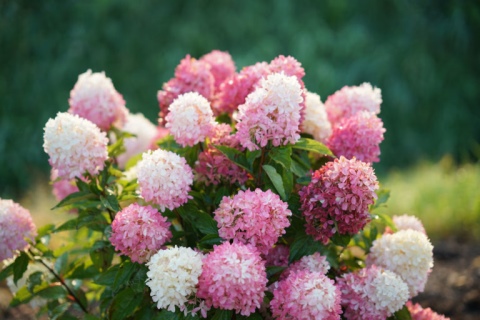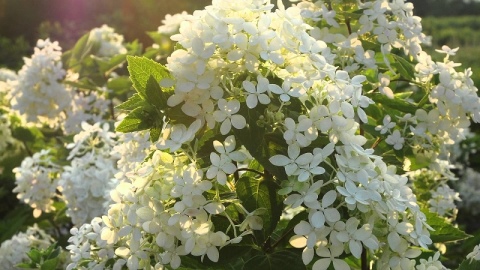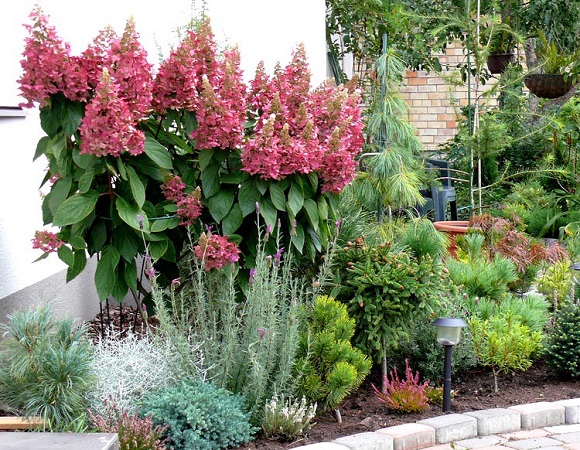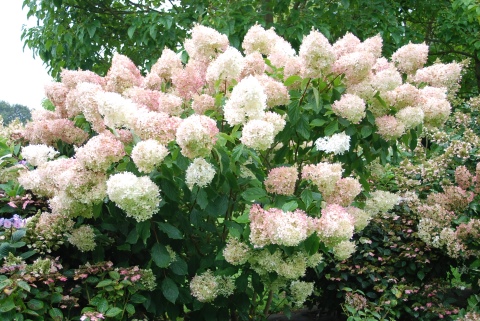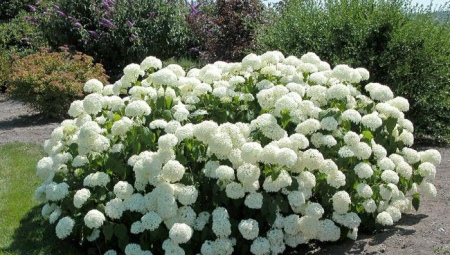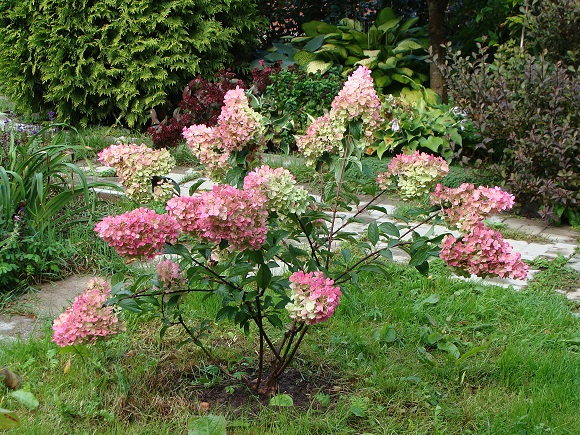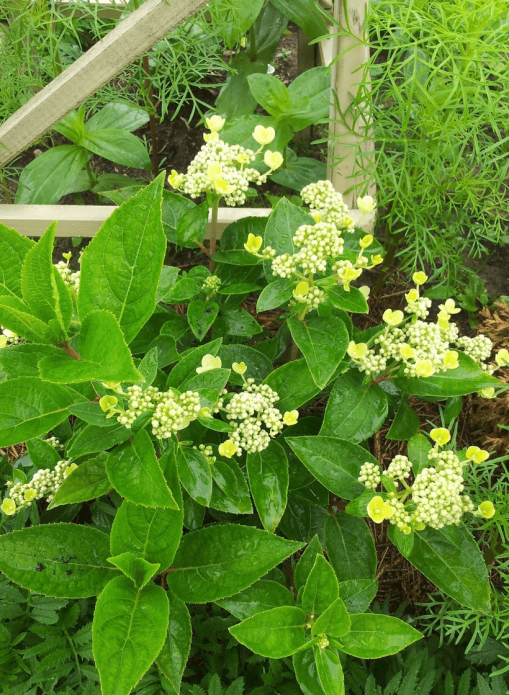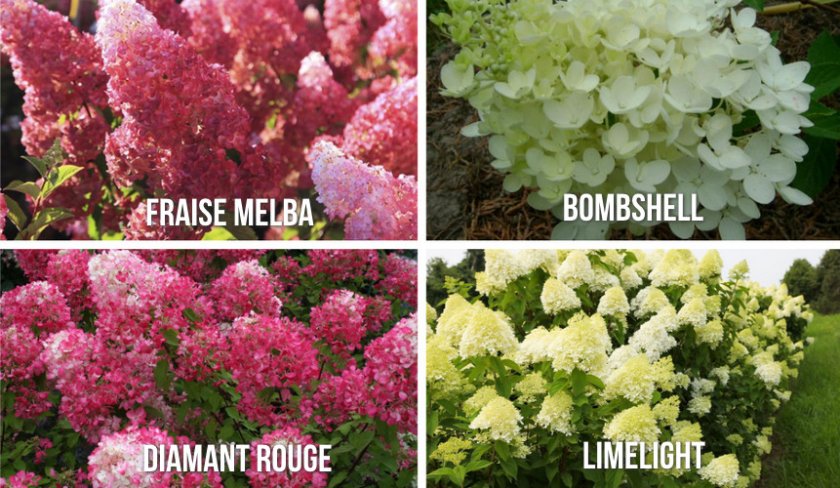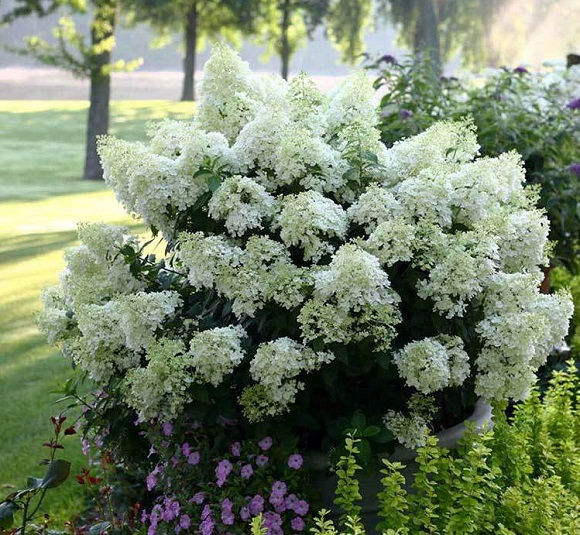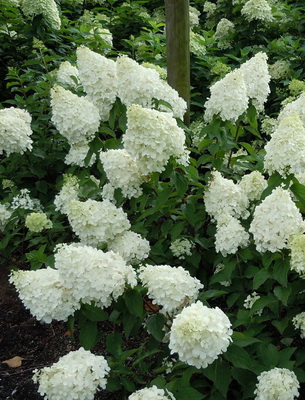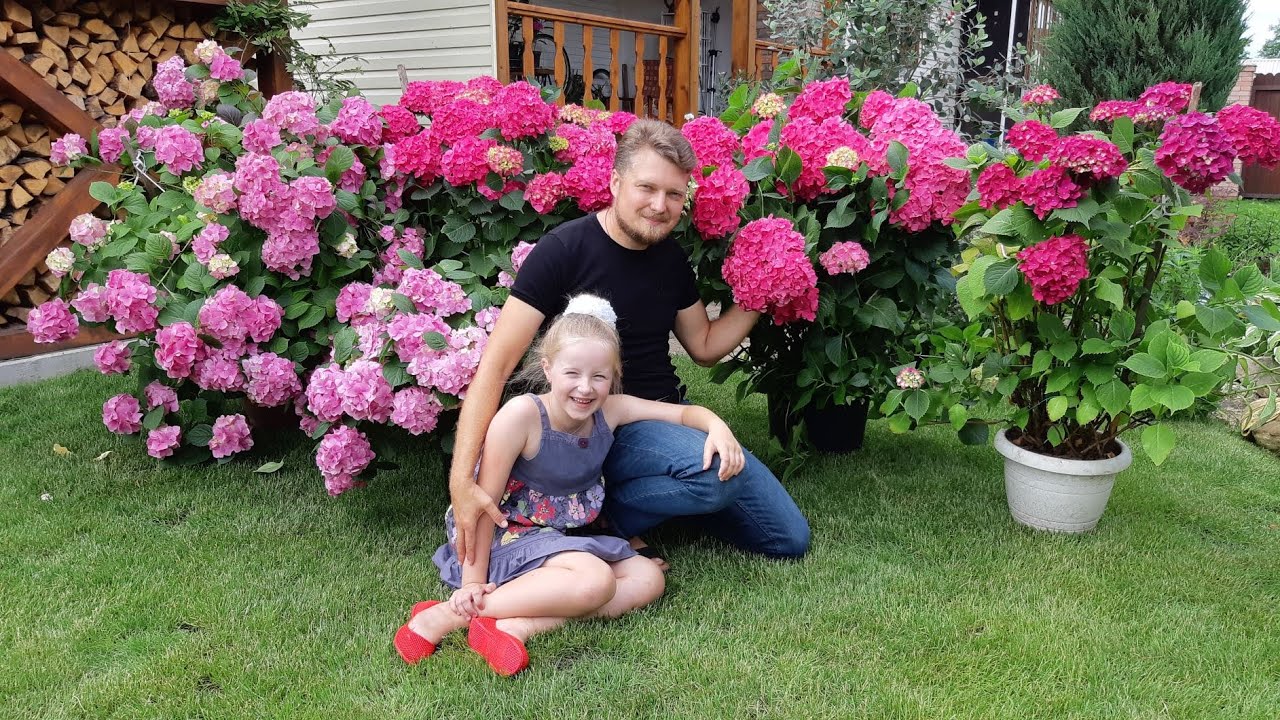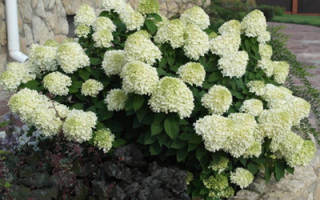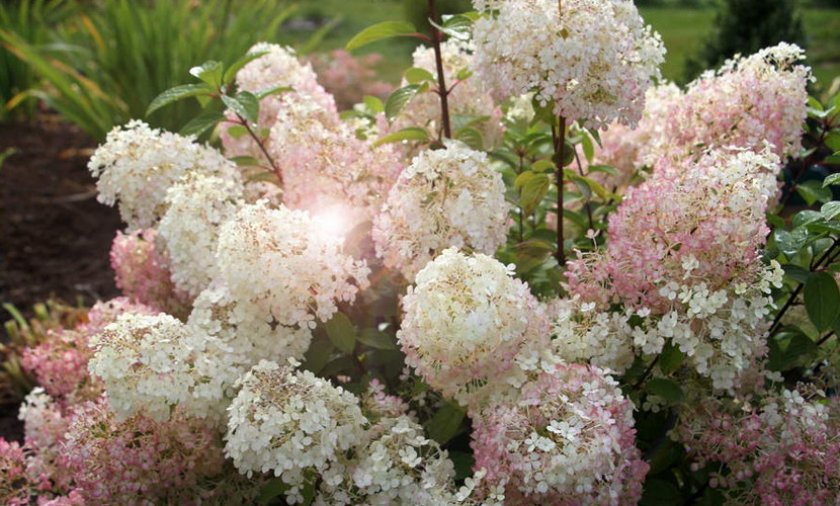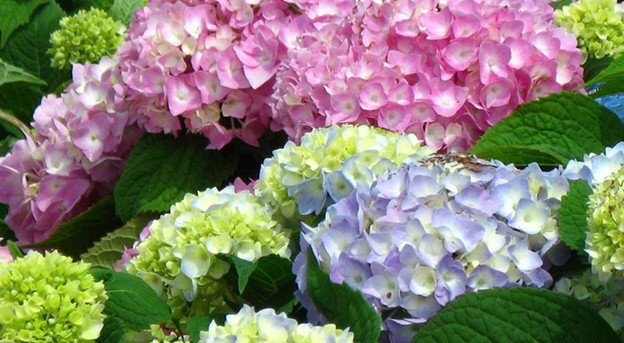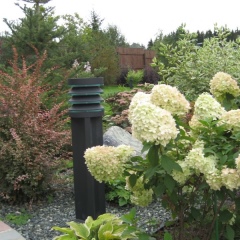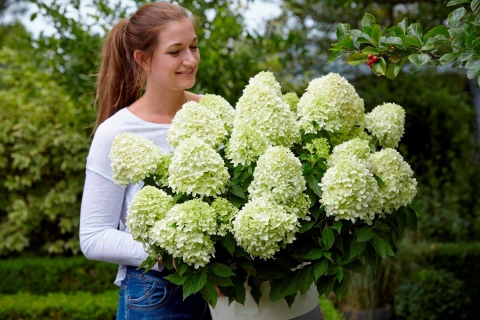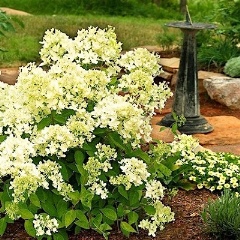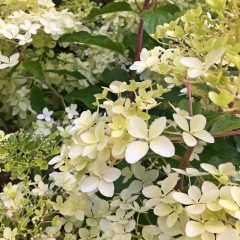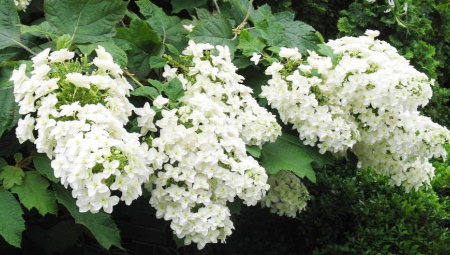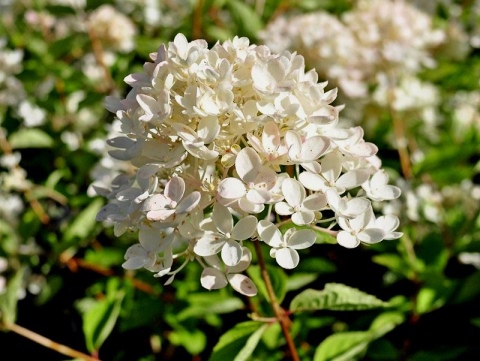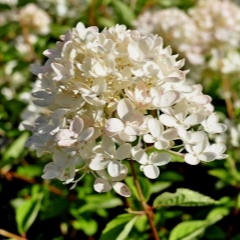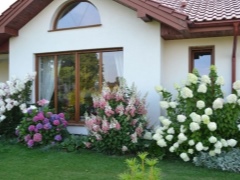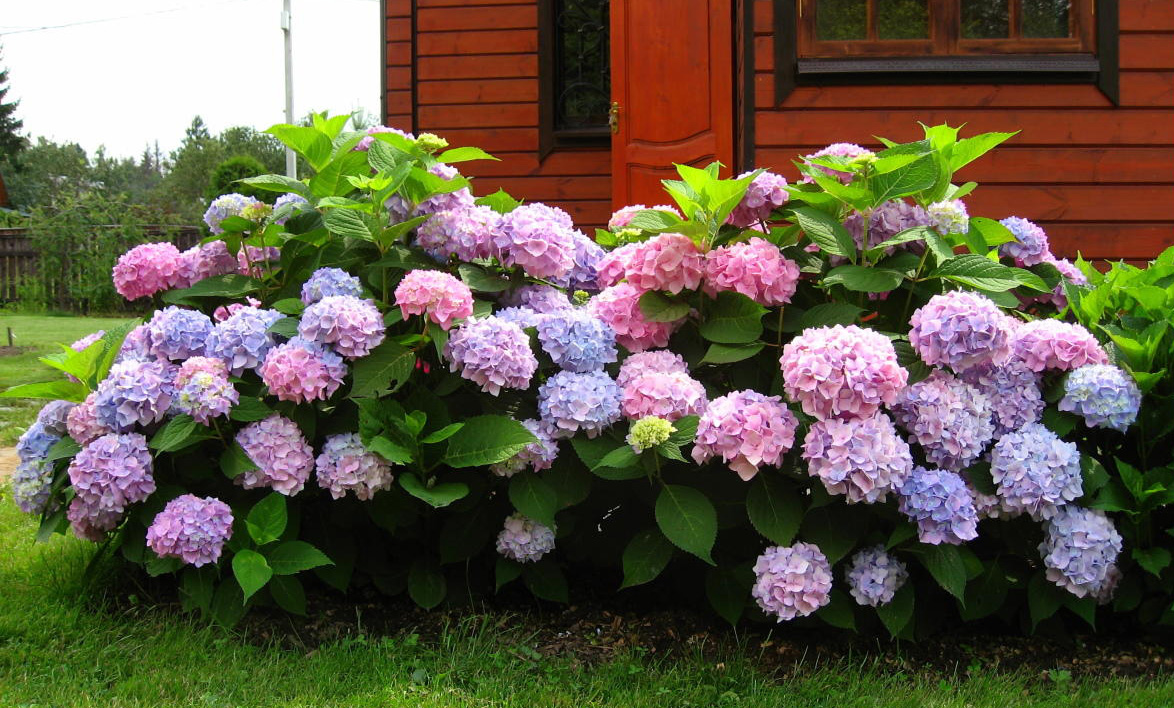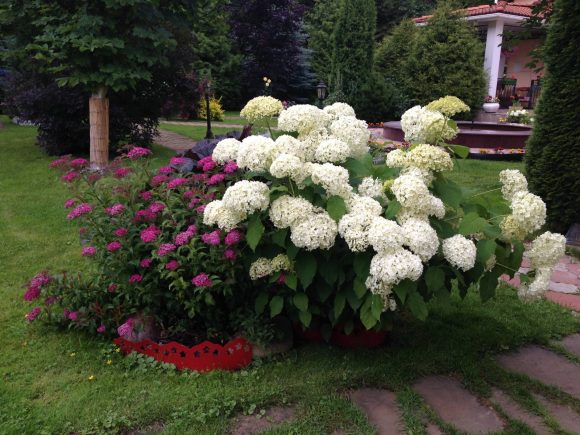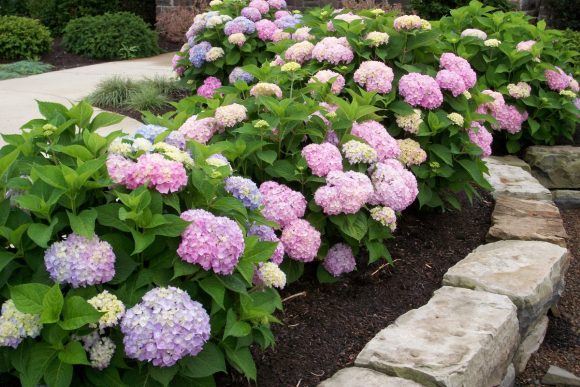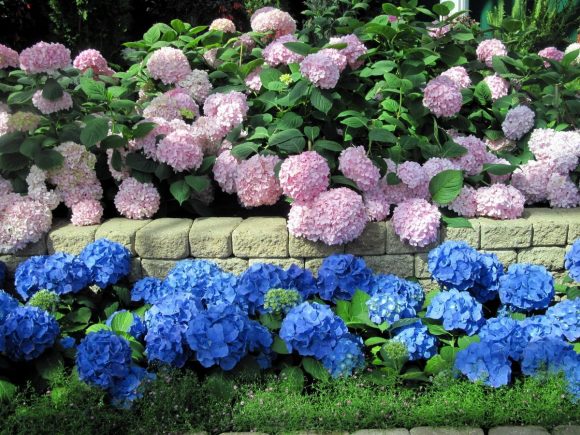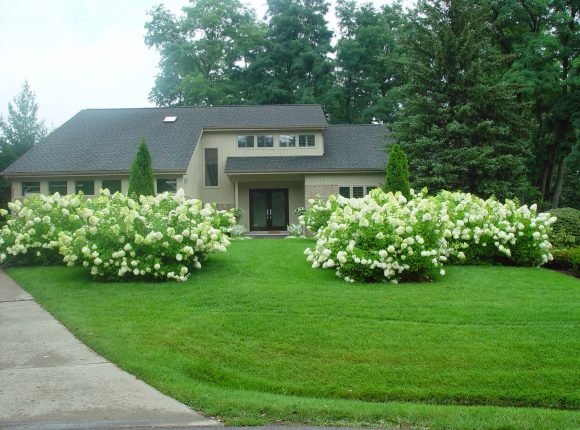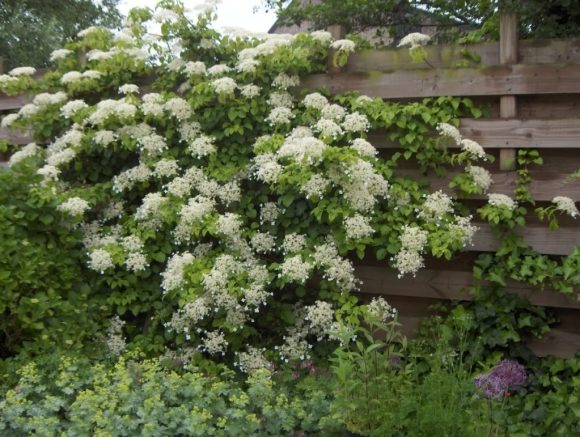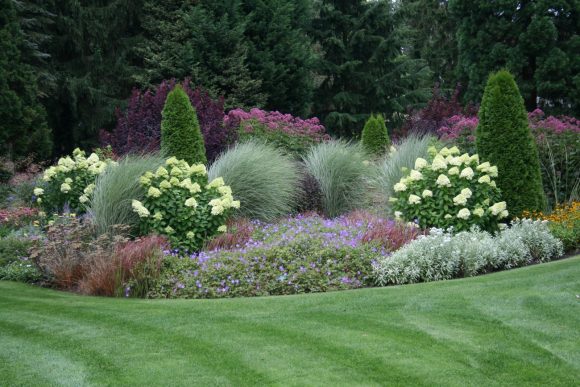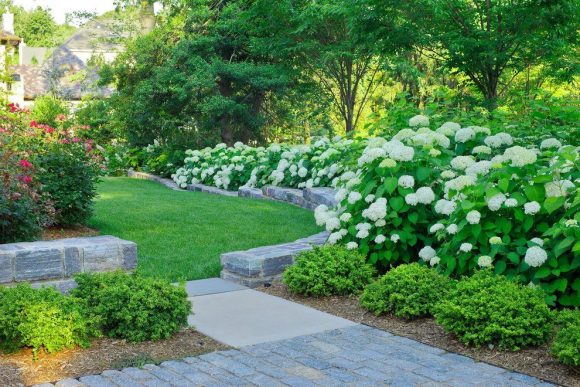How to plant?
As a rule, panicle hydrangea "Limelight" is used in single plantings - the bush tends to grow widely, in groups they are placed at a distance of at least 1 m from each other (along the borders of the pit)
It is important to maintain the correct positioning in the garden and in relation to other objects. When planting in open ground to create a hedge, it is worth maintaining a distance from the bush to the fence of at least 1.5 m, otherwise it will be difficult to trim and form
Before you get a Limelight hydrangea on the site, you will have to spend some time on preparatory work. Consider the following points.
- Timing. The optimal period will be from April 20 to May 10 - this is the time frame for central Russia. In the southern regions, autumn planting is permissible. In pots, flowerpots and containers from a shelter, bushes and standard forms are taken out to the site in mid-May.
- Choosing a place. Since transplanting a variety with a shallow root system is not recommended, it is worth considering the possibilities for the most careful selection of the territory where the shrub can grow for many years. Limelight hydrangeas are best placed in a well-lit area with little shade during the day. Planting under large trees is contraindicated - they will interfere with the normal development of a young shrub.
- Seedling selection. In order for the Limelight hydrangea to feel good on the site, it is worth purchasing a seedling in proven centers or nurseries, in pots. The trunk of a young shrub should not have traces of damage; swollen buds and hatched leaves are a good sign. Before planting, the selected seedling should be briefly placed in the water directly in the container - this way it will be easier to remove the clod of earth from the container.

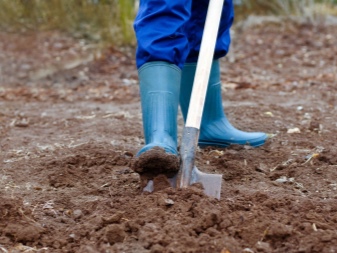
Since the clod of earth in the container seedling is not too large, and the roots develop superficially, it will be enough to prepare a hole 35 cm deep and 50 cm in diameter.The lower part of the hole must be covered with a drainage layer so that the water does not stagnate. A prepared soil mixture is laid on top, a seedling with neatly straightened roots is placed on it, the neck is not buried, left at the level of the sod layer.
Further, the previously removed soil is poured from above, it is lightly compacted, mandatory watering with warm water. On alkaline soils, post-planting mulching is mandatory. It is carried out by introducing peat into the near-trunk circle; on acidic soils, it is replaced with needles or sawdust.
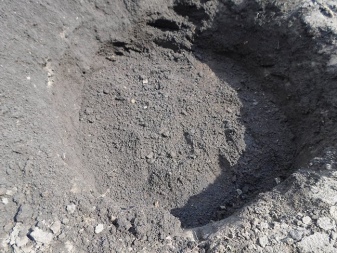
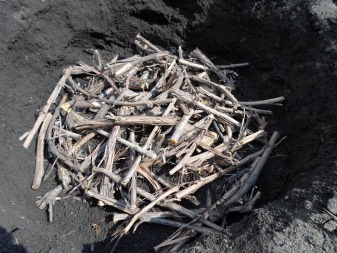
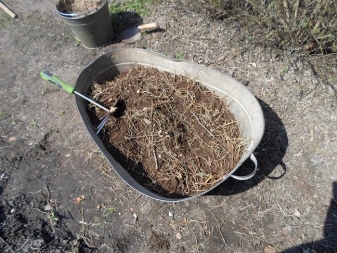

Color change

In many species and varieties of hydrangea, flowers are white or pale in color. Bright colors - pink, purple, blue - are much less common. However, it is not difficult to change the color of a regular white hydrangea to blue or pink of varying degrees of saturation. During budding and flowering, plants are given special additives that change their color. You can buy them at a flower shop, or you can experiment on your own. To obtain a blue and blue color, aluminum sulfate (1 tablespoon per 5 liters of water) is added to the water for irrigation. And for pink, a solution of potassium permanganate of varying degrees of saturation is used. The acidity of the soil also affects the color; the higher it is, the easier blue inflorescences are obtained.
How to take care of it properly?
Care for paniculata Weems Red hydrangea is relatively simple. Overdrying of the soil should be strictly avoided. The roots of the plant will not be able to fully provide it with water. If the heat comes, you need to water the flower 1 time in 3-7 days. At the same time, 10 liters of water are consumed for 1 bush.
As soon as the hydrangea is watered, the soil around it is thoroughly loosened. When there is a growing season and flowering, fertilizing is applied every 14 days. In the spring (up to half of May), nitrogen fertilizers are used.Later, potassium and phosphorus are used for dressing, otherwise it is impossible to guarantee lush flowering. Immediately before the beginning of winter, a layer of humus mulch is formed.
Shoots of "Weems Red" need to be pressed to the ground and covered with a layer of spruce branches. Garden arches are placed over it and a non-woven material is stretched. The edges are pressed as tightly as possible. If blown away by the wind, the consequences can be extremely sad.
Prune the hydrangea twice a year. With the onset of spring, you can form a bush
It is important to have time to do this before the juices begin to move. They begin work by removing frozen and withered shoots
They are removed at the root so that even small stumps do not remain. When the crown is formed, the shoots are simply pruned to obtain the required geometry.
They try to save last year's shoots without pruning. This allows more flower buds to be laid. Only old shrubs need to be rejuvenated by pruning. It is recommended to leave 5 or 6 developed branches in stock.
Important: all shoots, except for strong and well-formed ones, must be cut off without any pity. Inexperienced growers often cut off all shoots at the end of autumn.
This is absolutely impossible to do. The old branches are pruned, leaving a height of exactly 0.1 m. Then you can count on the appearance of a new young growth. It will bloom next season. Sanitary pruning is needed before the onset of winter. Inflorescences are cut out without fail; although they sometimes say that they are beautiful, under the snow load and under the pressure of the wind, parts of the plant can break.
To prevent the buds from freezing in extreme cold, it is required to cover the plants with agrofibre. Of the materials at hand, straw replaces it, but it is somewhat less practical.
Growth accelerators allow you to achieve the appearance of buds in the first year of life, but only in the next season, when a good root system is formed, flowering can be expected.
Hydrangeas in tubs
Hydrangeas can also be successfully grown in containers. For this, compact varieties are best suited, in which the bushes are not very tall and spreading. Young plants are grown in pots, adults are transplanted into larger tubs.

Hydrangea tubing allows every season to change the design of the garden, making new compositions from containers with plants, moving them to different corners. You can change the arrangement of hydrangeas and during the season, rearranging the plants at their peak in the most prominent place.
For the winter, tubs with bushes are removed to the basement or installed in a garden pit - a special trench, which is covered with a film frame on top and insulated with a covering material.

